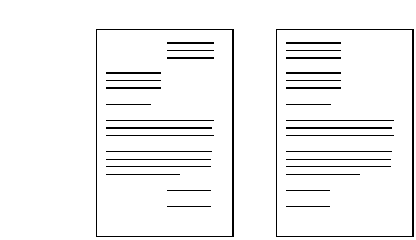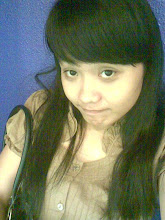A letter of inquiry is a request for information that the writer believes the reader can provide. Regardless of its subject, the objective is to get the reader to respond with an action that satisfies the inquiry. The action taken can benefit either the writer or the reader, and sometimes both. That being the case, the scope must include enough information to help the reader determine how best to respond.
How to write an inquiry letter:
- Be courteous. Remember, by making this request you are imposing on the reader’s time and/or resources.
- Don’t send an inquiry letter for information you could easily find out by other means, such as with a quick search on the Internet.
- Your letter can be fairly short, but it should be long enough to adequately explain what it is that you are inquiring about and what you want the reader to do in response to your letter.
- Generally, give at least a couple of weeks for the person, company, or organization to respond to your inquiry before you send a follow-up letter or make a follow-up phone call.
- If appropriate, you may want to mention that you will keep confidential any information provided. (This may increase the likelihood that the reader will respond to your inquiry.)
- Make it as easy as possible for the person to respond to your request. This might mean offering to pay for any needed photocopies or mailing costs, or perhaps including a self-addressed, stamped envelope; necessary forms, questionnaires, or other documents; and so forth.
- Make sure to include contact information so that the person can easily get in touch with you if necessary, such as your cell or home phone number or e-mail address.
- When the person responds to your inquiry, it is a good idea to send a quick note of thanks expressing your appreciation and telling how the information helped (or can help) you. If appropriate, you may want to offer to return the favor in the future.
How to respond to an inquiry letter:
- Specifically indicate the inquiry that was made, as you understand it.
- Express your appreciation for the person’s interest.
- If possible, personally respond to the inquiry. You might want to include with your response letter any brochures, catalogs, reports, or other helpful information available.
- If appropriate, clearly describe any action you feel the person should take and the reason(s) for such a recommendation. (However, you may want to use caution because of any possible liability you might incur for offering such advice.)
- If you cannot personally answer the person’s question, let him/her know that you have contacted the person who can and that he/she will shortly be in touch with the reader. If this is not possible, express your regret for being unable to help the reader, and try to find out for him/her the contact information for someone who can help.
- If appropriate, you might want to include additional information about your organization, the products or services you sell, or the subject matter of the inquiry, beyond the scope of the original inquiry.
- Close by saying that you would be happy to help the reader in the future if he/she needs further assistance or by wishing him/her well in his/her endeavor or project, etc.
Inquiry Letter Tips:
- Begin your letter by stating who you are and giving your status or position (such as student, researcher, interested consumer, etc.), and tell how you found out about the individual or entity that you are writing to.
- Clearly state what it is that you are inquiring about and what you would like the recipient of your letter to do. Make your inquiry as specific as possible.
- You might want to briefly explain the purpose of your letter or what you hope to accomplish. Such an explanation may prompt the recipient of your letter to act more quickly.
- If appropriate, consider mentioning the letter recipient’s qualifications for responding to your inquiry (this may prompt him/her to act when he/she might otherwise be hesitant to do so). For example, you could explain that you are writing to the reader because she is a leader in her field and the accepted authority on the subject you are interested in.
- Include the date by which you need the information, services, etc., that you are requesting, and indicate that you await the reader’s response.
- Thank the person for his/her time.
Sample Letter of Inquiry
The Virtual Community Group, Inc.
17 Park Road
Rural Town, NH
July 14, 2010
Jane Smith, Executive Director
Xavier Foundation
555 S. Smith St.
Washington, D.C. 22222
Dear Ms. Smith,
I am writing to inquire whether the Xavier Foundation would invite a proposal from the Virtual Community Group, Inc., requesting an investment of $50,000 per year over two years to support our Enterprise 2000 initiative. This grant would provide part of the funds needed for us to train at least 1200 low-income entrepreneurs in rural New Hampshire in the computer skills they need to create sustainable businesses as we enter the twenty-first century. Your literature indicates that the Xavier Foundation is searching for innovative ideas to improve the lives of the rural poor; we believe Enterprise 2000 falls well within your area of interest.
Information technologies are a promising solution to one of the primary obstacles facing the small rural enterprise: the geographic distances which inhibit networking with other businesses, and which segregate them from a larger marketplace. The Internet and other networks are now making it possible for entrepreneurs even in the most remote locations to communicate and do business on a region-wide, national, or even international basis. Working in conjunction with other organizations, Enterprise 2000 gives program participants technical skills training adapted to individual need; and, in collaboration with organizations which recondition and redistribute used computers, we also assure that they obtain the necessary computer hardware, at low or no cost.
We believe that broadly-implemented technical skills programs such as Enterprise 2000 have the potential to transform the lives of many struggling entrepreneurs, and change the economic landscape of impoverished rural communities. Unlike many poverty alleviation initiatives, all of the Virtual Community Group programs are predicated on the assumption that these entrepreneurs already have 90% of what it takes to compete in the marketplace -- intelligence, ambition, initiative, and talent. After two years of experimentation and program development, the Virtual Community Group has fashioned a superb, easily replicable model in Enterprise 2000, and established a high degree of credibility among community groups, policy makers, and funders. With your support, we can make that 10% difference in the lives of these hard-working people and the future of our rural communities.
Please feel free to call me with any questions. I look forward to hearing from you soon.
Sincerely,
Executive Director
_________Better Widget Makers, Inc.__________
5555 Widget Avenue
Silver City, CO 80456
September 26, 2003
Mr. Russ Hamilton
Vice President, Sales and Marketing
Golden Bread Company
123 Loaf Street
Silver City, CO 80451
Dear Mr. Hamilton:
Construction on the new employee cafeteria at Better Widget Makers, Inc. is nearing
completion and I am looking for a supplier capable of fulfilling our weekly bakery needs.
Do you have an information packet that would help me project the cost of doing business
with your company? We will need daily deliveries of pastries, pies, dinner rolls and
sandwich bread. Our facility operates 24/7, Monday through Friday, with a flextime
workforce of 1,500 employees. To complete my operational budget I will need the
following information:
• Wholesale price sheets
• Quantity cost breaks
• Annual contract discounts
• Delivery and or any other service charges.
To submit my proposal to the finance committee at their October 20th meeting I will need
to receive your information by the 10th. I will also need to meet with you after reviewing
the requested materials. Please call me for an appointment at your earliest convenience.
My personal extension is 216-8080, # 29.
In keeping with long-standing policy we would like to place this contract locally. I look
forward to working with you and am hopeful that the Golden Bread Company can fulfill
our needs.
Sincerely,
Ida Mae Knott
Purchasing Agent






